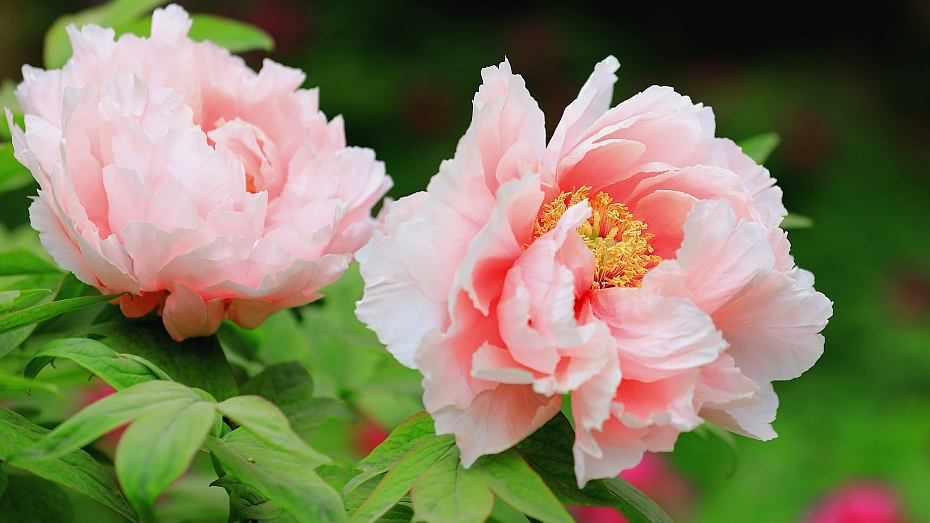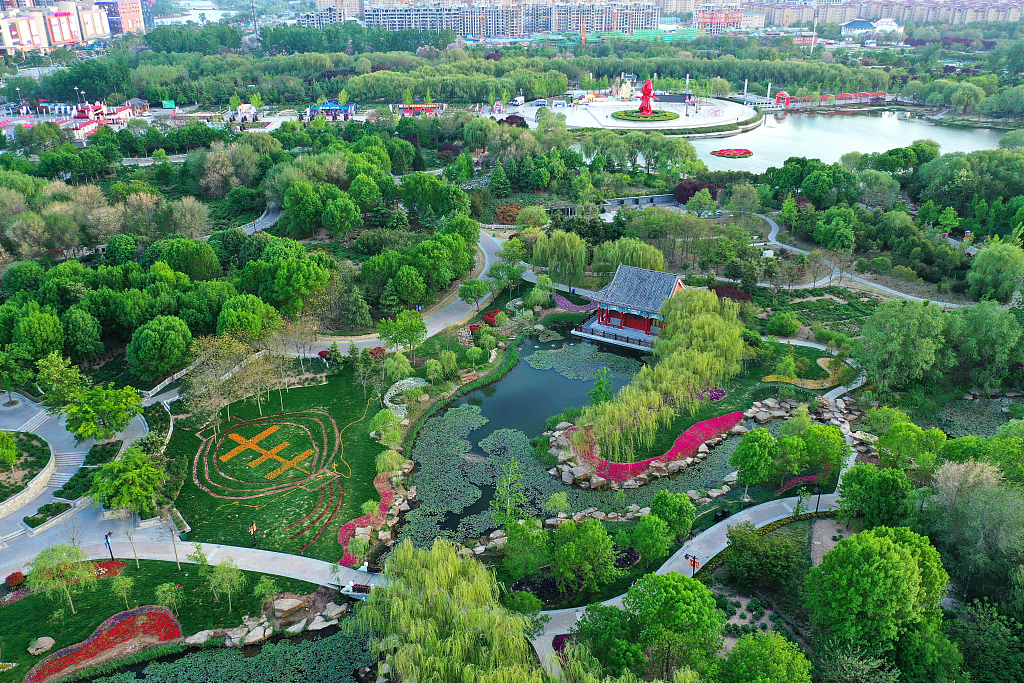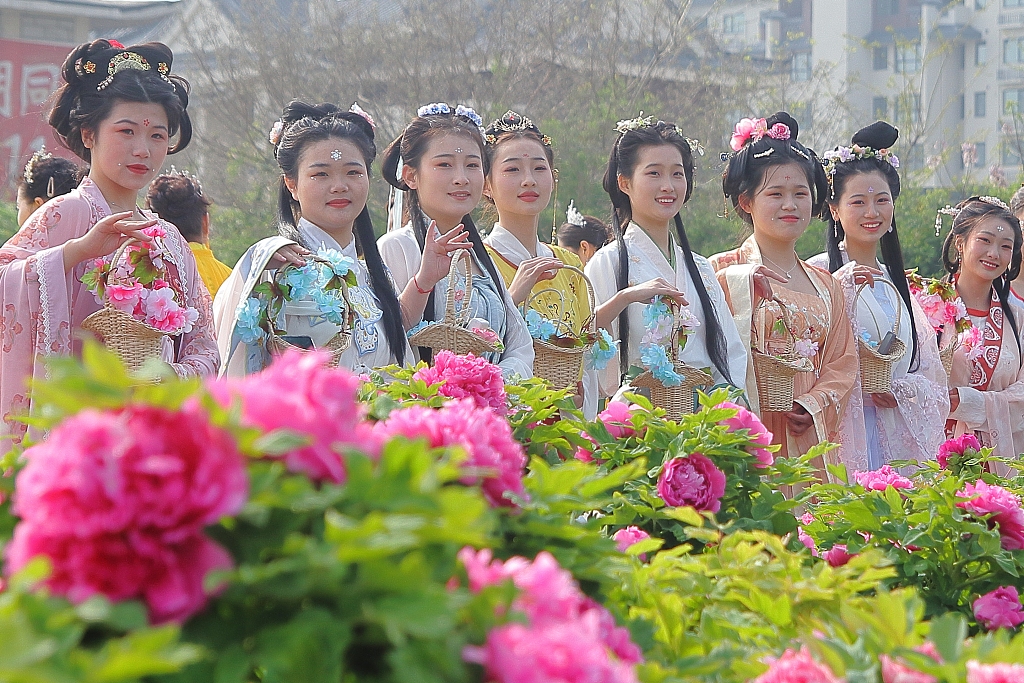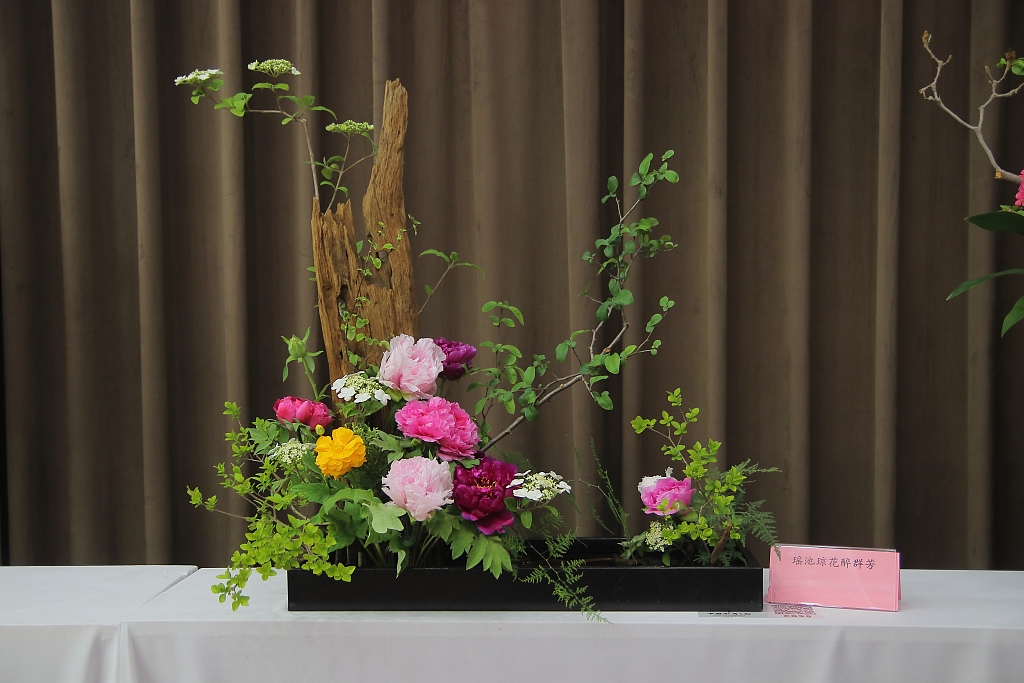
Peonies have been cultivated in China for 1,900 years, with their origins tracing back to some of the valleys that the Yangtze and Yellow rivers course through. /CFP
Peonies have been cultivated in China for 1,900 years, with their origins tracing back to some of the valleys that the Yangtze and Yellow rivers course through. /CFP
The 2023 World Peony Conference and the 32nd Heze International Peony Cultural Tourism Festival (collectively referred to as the "2023 Heze Peony Festival") will officially kick off on April 8.
This year's festival includes forum summits, trade negotiations, sightseeing tours, cultural performances, art exhibitions, and more.
Peonies have been cultivated in China for 1,900 years, with their origins tied to the Yangtze River and Yellow River valleys. "Shennong Bencaojing" (Shennong Materia Medica), a Chinese text on agriculture and medicinal plants that was published during the Han Dynasty (206BC-220), was the first to record peonies in the latter category.
During the later Sui Dynasty (581-618), the cultivation of peonies rapidly expanded in both quantity and scope. Their large, showy and fragrant flowers, which come in a range of colors including pink, red, white, and yellow, made them popular in imperial and aristocratic gardens.

An ariel view of a peony garden in Heze, Shandong /CFP
An ariel view of a peony garden in Heze, Shandong /CFP
Formerly known as Caozhou, Heze is a city in east China's Shandong Province that has long been renowned for producing peonies. During the Ming (1368-1644) and Qing (1644-1911) dynasties, more than a dozen peony gardens were cultivated and developed there, leading to the abundance of varieties available today. Heze's ornamental peonies are known for having nine series of colors, 10 flower types, and 1,280 varieties.
Today, Heze is considered the world's largest base for peony breeding, cultivation, research, processing, export, and ornamental display. The area of cultivation surpassed 120,000 mu (about 20,000 acres) by 2012, earning the city the title of the "Peony Capital of China" by the China Flower Association. Heze has contributed to 80% of the total number of new peony varieties bred in China, and seedlings from Heze have a support rate of over 85% nationwide.

Tourists sporting traditional Chinese clothing, or Hanfu, take photos next to some peony flowers in Heze, Shandong, on April 6, 2023. /CFP
Tourists sporting traditional Chinese clothing, or Hanfu, take photos next to some peony flowers in Heze, Shandong, on April 6, 2023. /CFP
China's love affair with peonies
Peonies have long been cherished in China due to their large and fragrant flowers, which are believed to symbolize prosperity and peace. They have been dubbed the "king of flowers" since ancient times.
This passion for peonies was reflected in a public poll by the China Flower Association in 2019 that called on people to vote for a national flower. Within a week of the poll's release, a total of 362,264 votes were cast, with peonies receiving 288,747 or 79.71% of the votes.
Although China's national flower has not been officially determined, the popularity of peonies in the poll underscores their importance in Chinese culture.
Peonies, also seen as a symbol of friendship, soon made their way overseas. During the Tang Dynasty (618-907), they were introduced to Japan, and during the Qing Dynasty, they reached Europe. In the 1960s and 1970s, peonies were exported to countries such as North Korea and Albania and seen as envoys of goodwill.

Peony flower arrangements are on display at Caozhou Peony Garden in Heze, Shandong, on April 6, 2023. /CFP
Peony flower arrangements are on display at Caozhou Peony Garden in Heze, Shandong, on April 6, 2023. /CFP
In the 1980s, Japan, Thailand, the United States, France, Germany and other countries started to import peonies from Heze, and many peony gardens were established on such foreign shores.
The Netherlands, known as the "Garden of Europe" and the world's largest producer of fresh flowers, is also a significant export destination for Heze peonies. Research has shown that the historical connection between Dutch and Heze peonies dates to 1656 when the Dutch East India Company began trading with China.
This year's peony festival transcends its traditional location as it has established a sub-venue in the Netherlands for the first time, further enhancing the international reputation of Heze as the "Peony Capital of China."
In 2022, peony sales in Heze surpassed 400,000 pots. The peony is both a regional and national treasure, with over 120 enterprises in Heze involved in various aspects of peony production, processing, and export.
More than 260 types of peony products including seed oil, teas, cosmetics, and healthy food have been developed, with exports to over 30 countries and regions achieving a total output value of 10.2 billion yuan (about US$1.5 billion).